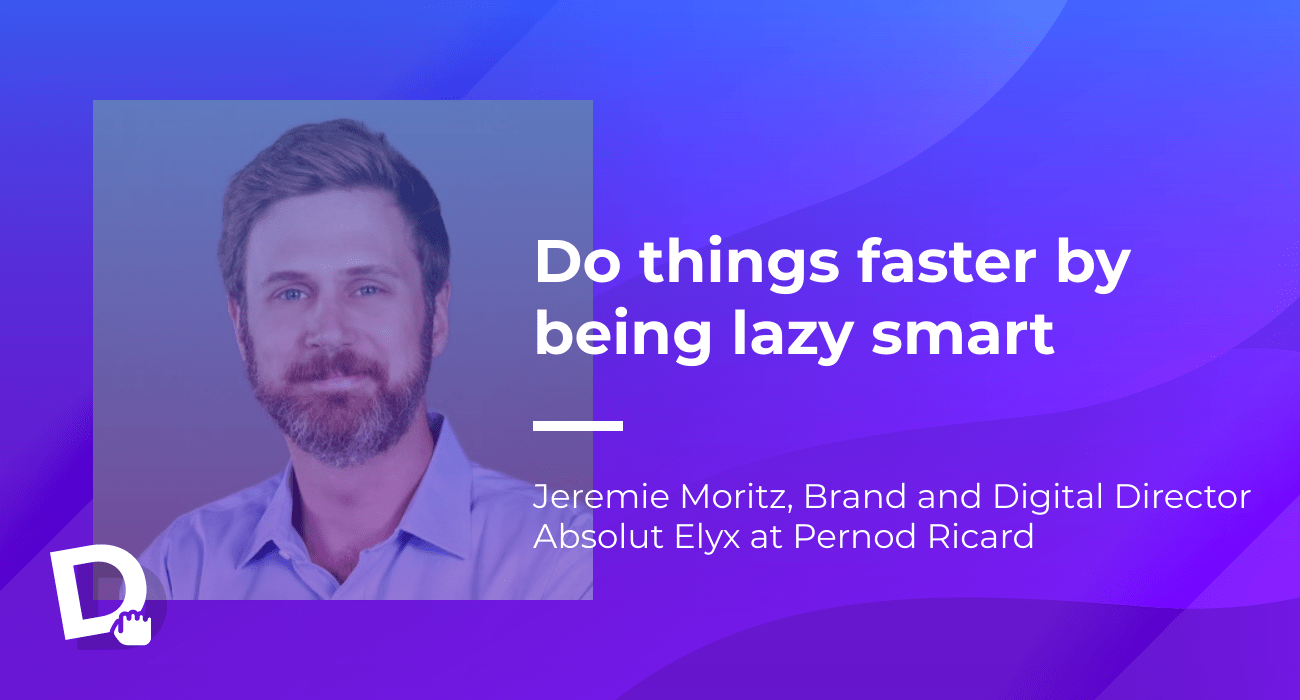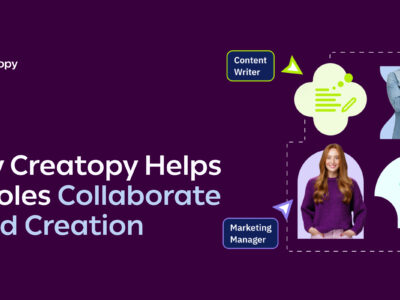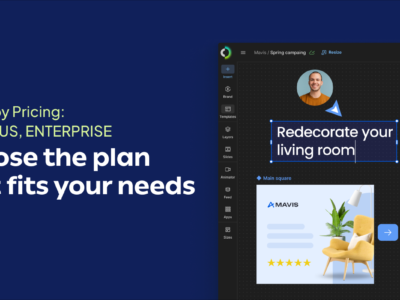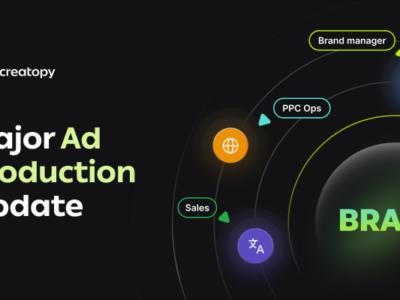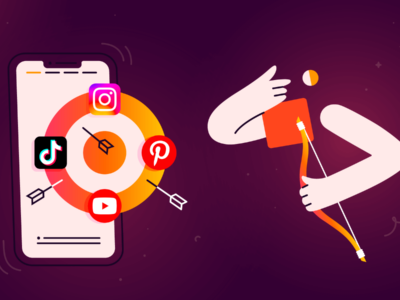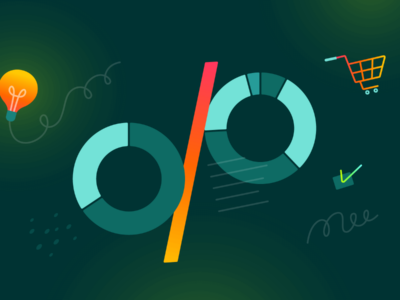Welcome back to the Drag & Drop Show!
In this episode, we talk with Jeremie Moritz from Absolut Elyx. Brand and Digital Director, Jeremie is responsible for the development and execution of the premium brand’s integrated marketing plans.
Our host, John Biggs, takes Jeremie to a very interesting discussion starting from how to tell a story as a brand to how to know what are the most efficient strategies in marketing.
Now, let’s drag and drop some ideas and knowledge from this episode.
Key Takeaways
Absolut has a great story overall, not only with the way that it’s done but also with the sustainable practices that they have.
It was really about building close communities.
When you create a sub-brand you need to be very clear in terms of what your relationship with the bigger brand is.
We explored everything we could by ourselves or with tools that could help us unleash more creativity.
Adapting to consumers doesn’t stop you from being creative.
Marketing will become more agile, with fewer legacy agencies to do everything.
Transcript
John Biggs: I’m joined today by Jeremie Moritz. He’s a Brand Director for Absolut Elyx, which is a high-end Absolut Vodka, which sounds delicious. Welcome, Jeremie!
Jeremie Moritz: Hey, thanks for having me.
John Biggs: How much vodka do you get to have during the day?
Jeremie Moritz: Um, actually not that much. Only like… after hours.
John Biggs: Okay, good. So, tell me a little bit about what you do there. You’re a Brand Director so you’re in charge of the look and feel of the entire product?
Jeremie Moritz: Yes, I’m in charge of the brand for the U.S. market. We do have a global team based in Sweden because Sweden is the motherland of Absolut Vodka. I’m in charge of selling – selling the brand, finding the right consumers, and telling our story in the U.S.
John Biggs: How do you do that? How do you tell a unique story? I mean it’s a Swedish story, right? And I think that Absolut has done an excellent job over the decades, quite literally, in getting people interested in the product. But how do you tell a story of an upgraded version of the product?
Jeremie Moritz: Good point, especially since you know it’s vodka and many people might have preconceived ideas of flavorless, odorless vodka, especially in the U.S., where it’s like the biggest market in the world.
So, I think that the starting point was that we created Elyx not just to have a high-end vodka because other brands are out there, but also because there was a distillery in Sweden, like an old distillery from Absolut that hasn’t been used for decades, and our Master Distiller said, “Hey, I think we can really make a new product, a more craft product.” And that really helped to shape not only the product but the story because it’s a product that is handmade for real.
So, that’s the tagline we’re using right now because there are so many so-called handmade products that we wanted to call out that we have no computers in the distillery, it’s all made by hand.
Absolut has a great story overall, not only with the way that it’s done but also with the sustainable practices that we have. And that’s something that the Absolut brand overall has been talking about because they are all about the Planet Earth’s Favorite Vodka, which again, is very timely. Absolut as a whole is 90% carbon neutral. We recycle even the CO2 from the fermentation to give it to a soda factory next to the distillery, and everything is really sought-after.
So, that’s the start of a good story when you can talk about the product and you can say more than just tasting notes and how it’s made – It’s the whole thing.
What we say is that from seed to bottle, we’ve thought about everything.
Then I think the add-on factor of Elyx is the lifestyle of the brand, so we created a whole universe. We offer an experience in Sweden where you go to an old blacksmith’s to have dinner, then you go in the woods where we put a container that we transform into a bar.
In the U.S., our CEO lives in Hollywood, in Los Angeles, and he basically built or decorated his house as the brand, so between ourselves, we call that the “Elyx House.” We have our own wallpaper, we have our own drinking vessels. We designed, like you may have seen, a pineapple drinking vessel. We started with that and now we have like a whole zoo of drinking vessels, like flamingos, and owls, and rabbits, and turtles, and we’ve been selling them through our website called elyxboutique.com. It’s been a huge success, we’ve sold like more than 5,000 units of what is really high-end merchandising.
John Biggs: Hmm. So, this is going to be interesting, especially for Creatopy folks, the users. How do you do what you did without too much money? I mean, obviously, Absolut has a pretty big budget for all this stuff. What do you do first? What do you look at in terms of store, in terms of branding and what’s the simplest and cheapest way to get started down that thing, down that path?
Jeremie Moritz: Yes, Absolut is a big brand but funny enough, Elyx, has almost been set up as a startup from the inception within the franchise. Because our CEO, Jonas Tahlin, who was also the CMO of Pernod Ricard USA, came to the U.S. five years ago and then started like a SWAT team of people and really adopted that mindset of lean growth.
So, you really start by the base of the bars, and the bartenders are always where you start, but in terms of marketing, there were a lot of intimate experiences, dinners. But then you can re-use the content online and share the stories. Our merchandise has actually been a great way to connect with influencers very early on, so because we had that, it was like “copper currency”, so that we could give that away to some influencers to start getting coverage.
It was really about building close communities of bartenders and artists in L.A. and New York because when we started out, our CEO was living in New York and he had also decorated his apartment as the brand and hosted a lot of people there, so in a way, his apartments it was also our office.
We used everything we had to host and create content and at the end of the day, the team was small, so we had to find a way to also automate the content creation and content iteration. But we literally did everything internally and learned because we had time to.
We had more time than budget, so we explored everything we could by ourselves or with tools that could help us unleash more creativity.
John Biggs: So, that’s actually an interesting point. You basically took the events that you ran at different houses, presuming you don’t have to buy a special wallpaper to make something your own event, and then you’ve created content around that: Instagram stuff, social content, that sort of things? Or was there something more specific that you guys were thinking?
Jeremie Moritz: There was a lot of social content for sure. Instagram has been our lead social channel because we’re very visual and we’re still building the brand, but we also recorded interviews, whether it was for internal stuff or external stuff. Basically, social media gives us a platform, so we don’t have to rent real-life event spaces. For us, I think that was a way of working, and we then had smart ways to create iterations and to put the content out there.
John Biggs: What do you do in terms of design? How do you create a unified design aesthetic throughout the whole brand?
Jeremie Moritz: So, I think we’re lucky as a brand because our Global Director is also our Creative Director. I think that’s the way it should be in general—that you should have an in-house Creative Director. Our Creative Director’s name is Miranda Dickson and she’s been in the vodka industry for decades. She really has an eye for everything creative, so she built the whole Elyx universe and she’s designed the most complete set of guidelines that I’ve ever seen, with details like what kind of pillows you should get for an event. So, we were pretty lucky that she spent a lot of time designing the foundations of the brand, and therefore we had the freedom to create our own versions of that, internally and externally.
We were a bit bootstrapped in the beginning, so we used platforms like Creatopy to design our own ads and pieces of content because that was a way to save time and test a lot of different things very fast.
John Biggs: How do you know what works? What are some of your metrics? So, say you had two banners or two pieces of content, how do you know what works best? What are you guys looking for?
Jeremie Moritz: So, I think, uh, it always depends on what the objective is. If we look at sales or at the intention of driving some indirect commerce platforms or to our Elyx website, we look at click-through rates and even conversion rates, because when the content puts the consumer in the right mood it also impacts the conversion rates. So, this is our approach regarding conversion rates.
If we want to measure conversation and engagement, we look more into likes and the overall engagement. Is our content being shared? Is it being commented on? Is it provoking a reaction?
I think that you want to trigger a reaction in conversation because at the end of the day people talk about your brand if your content has triggered something.
John Biggs: How do you separate out the hard quantitative aspects of this stuff with its artistic side? I mean, not everything can be hard numbers, right? How do you figure out where that starts and stops?
Jeremie Moritz: Um, I think that it has to be about numbers at the end. I know this might be an issue for all the marketing people out there. But I think that if you have a clear image of your brand, so basically of what your canvas is and where you can go, then you can test different, layouts, photos, and colors. But if you’re clear on that you also know that you have some kind of limits, and then, are they resonating with the consumers? Because the ideal situation is wherein your, I would say, creative juice is aligned with what consumers want to see. So, at one point, if we implement a call-to-action and we’ll test five, of five different colors, and then go with the best one.
I think where we put the limit is that we would never say, “Hey, let’s put like a bright red or green in an ad, just because we’ve read in an article that it’s the best-performing call to action.” I think that we would not do that because we still want to keep the brand’s universe. So, that’s the limit, but at the end of the day, we’re spending money on ads, so you need a way to make decisions.
Again, there are so many combinations you can do. There are a lot of tech platforms or even new agencies that can produce literally 200 pieces of content in a week only by using your existing. Because if you have, let’s say ten photos, five taglines, and five different CTAs, and you start to mix all of these, those are a lot of combinations that you can test.
John Biggs: It’s pretty interesting because from a designer’s viewpoint, and I’ve actually talked about this with some other designers, there’s the idea of the art here, but you’re extremely pragmatic. You basically work within a universe of color and design, et cetera, and then work within the budget, within that universe, right?
Jeremie Moritz: Yeah, I think we’re still like a small brand, so we have to optimize a lot, and while creativity is still important I think we don’t have the budget to go for like huge emotional pieces like Dove or Nike, for example. And also because not enough people would see it to trigger a reaction, we don’t have like the budgets or the awareness to do that. So, I think that creativity is still important but at the end of the day, adapting to consumers also is.
Look at what Netflix is doing—they’re still big and they’re all about creativity, and they’re promoting creative shows and movies. That can be observed even from the way they do their ads, their intros, outros, and displaying actors.
I recently saw a Game of Thrones case study where they were showing that the actress who plays Daenerys was more successful in this movie than other movies because they put more weight in showing her character.
So, I think that adapting to consumers doesn’t stop you from being creative. I believe that you just need a bank of assets, of creative assets, and then you can play with them. I think another good example is Adidas, during the last soccer World Cup. They told me that they shot thousands of photos and videos with all the players, from all the teams, and they even had different moods, like celebrating or being disappointed. At the end of the day, they did that so they could react in real-time to what was happening during the games. But I think that they only used something like 5 or 10% of the assets that they shot because that’s what usually happens. So, they planned for everything and then they adapted based on what was happening and what was working.
John Biggs: How does it feel to create within a larger corporation? I mean, you basically have the Absolut brand, but how do you create a sub-brand? What are the best practices there?
Jeremie Moritz: I think that when you create a sub-brand you need to be very clear in terms of what your relationship with the bigger brand is. That’s important when you’re part of a franchise because we share the same values, the same production, and process. The same terroir, as we say in French.
Again, having a clear purpose, a clear relation to the master brand is key. We had a lot of freedom to test our own stuff, to also. We didn’t have to work with the big agencies that probably the other brands are working with, so we work with smaller agencies and freelancers.
To give you an example, for the elyxboutique.com shop I did the setup by myself on Shopify, which is an amazing platform to sell online. Then, we did the design of the site with an English freelancer based in Berlin, Germany, for a few thousand bucks. We’re also working with a freelancer to handle conversion rate optimizations and make some design improvements. He’s a Portughese guy that’s based in Amsterdam. And then I’m doing email marketing with a team of two people based in Seattle that I’ve never met.
I believe that we’re maybe a good example of what marketing is becoming— something more agile, with fewer legacy agencies to do everything.
Sometimes you need bigger agencies for creative juice or some specific production, but now I think you have to use a hybrid model.
John Biggs: That sounds like you’re a little startup but you’re within this big company.
Jeremie Moritz: Yup.
John Biggs: Jeremie, thank you for this. This is has been really fascinating. It’s interesting to hear how the big guys do it and I think that a lot of what you said is applicable for smaller folks just starting out.
Jeremie Moritz: Oh, sure. I think that whatever the size you are at, you should always start with what you can by yourself. Be smart about it, and basically push back the time where you’re going to start to spend money because at least you’re also covering the basics of SEO and content.
Sometimes people forget about this, and I see this happening to big brands too.
Starting with the basics is always a good choice.
Even now I’m talking about Creatopy, but I’ve started to use Creatopy because we had a set of different ads and we’ve been asked to centralized them and produce like 15 or 20 different formats.
Normally, the other brands would go to our internal content studio and ask for them, but it has a cost. And we’ve done it and I’ve shown it to the other brand teams, and they were like, “Okay, so actually with some clicks and maybe a few tweaks, you can create 20 banners out of one design.” And that’s a good idea that’s going to save us time, especially in the U.S., where you’re trying to serve 50 states. Each state is almost like a different country, and everybody wants to feel and look local, and everybody wants their own format.
There’s a tool to help you to do anything today. So, again, we always say that if you want to find new ways of doing things or new shortcuts Google is your best friend. I call that being “lazy smart.”
Because I’m a bit lazy, I always try to find ways to do things faster.
It’s probably less effort than doing everything manually.
John Biggs: What’s your favorite Absolut cocktail?
Jeremie Moritz: I’m pretty classic, so I would say that the Elyx Martini with Lillet Blanc is my go-to. So, instead of using Vermouth, you are using Lillet Blanc, which is a fortified wine from France.
John Biggs: Sure.
Jeremie Moritz: And that’s a pretty good way to start your night.
John Biggs: Oh, beautiful. Thank you, Jeremie—thank you for joining us, this has been fun.
Jeremie Moritz: Thanks. Thanks for having me.
Click here to give Creatopy a spin.
If you liked this episode, hit “Subscribe” to get notified of the latest episodes wherever you get your podcasts:
Thanks for tuning in!
The Drag & Drop Show is an original series created by Creatopy.

